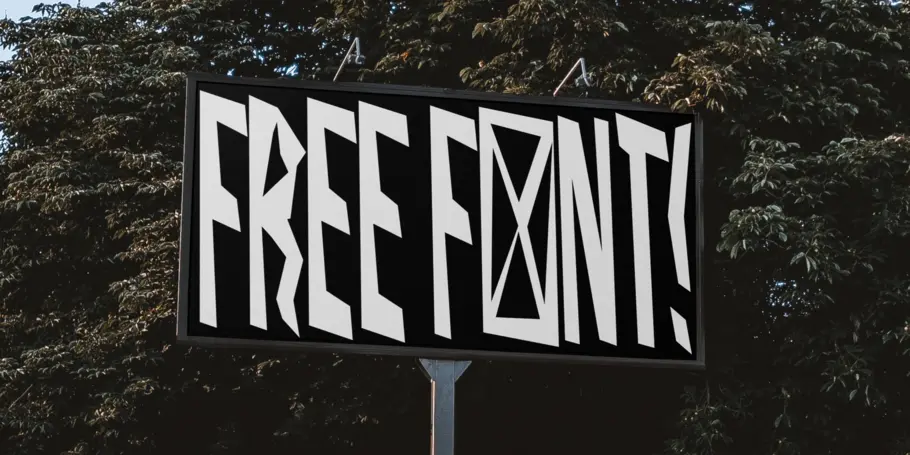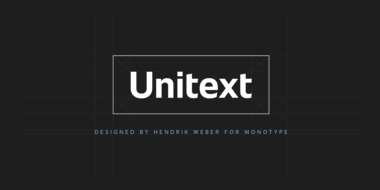Are free fonts worth the headache?

Designers who have encountered issues with low-res legibility or missing glyphs understand the value of high-quality typefaces sourced from established designers and foundries. However, many non-creatives don’t see the point in paying for fonts. How many creatives have heard the words “just get something free” at some point in their career?
While there’s no denying that there’s a time and place for free fonts, at which point do the benefits outweigh the drawbacks? At which point does free turn into a liability? Is there such a thing as truly free, commercial fonts? Let’s find out.
When are free fonts OK?
There are instances where free fonts are enough, even beneficial.
Aside from working really well as a reliable set of fallback fonts, free fonts’ also work well in test environments across all developers’ platforms. They’re great for products in the beta, testing, or demo stage. Need fonts for invoices, billing statements, official letters, or nutrition labels? Free fonts will suit these utility use cases just fine. All in all, free fonts work well for single-instance needs.
But as your company scales, or as you venture into differentiating your products and services in the market, the less valuable free fonts become — especially if your brand is the product itself. It gets harder and harder to find, manage, and review the licenses of free fonts for commercial use.
At some point, relying on free fonts simply becomes more trouble than it’s worth.
What are the issues that come with overreliance on free fonts?
The sheer ubiquity of free fonts makes them difficult to use when creating outputs with a distinct brand voice. If you need to create or maintain a brand presence or design consumer packaged goods, there’s a higher need to differentiate yourself in the marketplace. Having hundreds of other companies, websites, and brands using the same fonts runs the risk of diluting your brand equity.
Fonts are an important part of building trust and recognition. For companies that rely on customer trust (e.g., financial institutions, insurers, medical providers, etc.), a strong brand identity can be an important weapon against scams. Free fonts make it easy for scammers to launch phishing (or spear phishing) attacks — creating carbon copies of websites, emails, and apps, putting people’s money, investments, and retirement funds in jeopardy. It happened to Venmo.
Aside from branding issues, free fonts also suffer from a whole host of performance issues. Fonts are software files that interact with applications and the operating system on which it’s installed; without the guidance of a skilled font engineer, rendering issues may arise from crashing glyphs, or a lack of proper kerning (the space between glyphs) text in certain scenarios. A free font downloaded from a random website might not support a broad range of languages and or complex scripts (e.g., Japanese or Arabic), or basic diatrics to cover commonly used Latin languages.
Open-source fonts from established sources can be changed, removed, or deleted at any time. In this case, your reliance on the code is stuck. Even the most well-known and established open-source font libraries tinker with their fonts from time to time. If you happen to be using a font from one of these libraries, and they happen to adjust spacing or kerning, your pages and apps can break as a result.
When you encounter any of these issues with your free or open-source font, who would you turn to? Is there a specialist who will add the characters that you need, or amend features of the font without damaging any existing backward compatibility or legacy documents?
On top of that, as you deploy free fonts at the enterprise level, the legal and compliance risks may also rise.
Is your free font free?
When someone refers to free fonts, they’re can be referring to:
- Pure, free fonts - open source, freeware, shareware, public domain, or demo fonts downloaded from an archive or library.
- OS fonts - fonts that come with your operating system/hardware.
- Subscription/software add-ons - Fonts that come as an add-on to a subscription.
What most people don’t consider is that the use of these fonts is always based on an end-user license agreement. Except for fonts covered by the SIL Open Font License, the use of so-called “free” fonts might be limited by a fine print (often in the form of a readme file that comes with the download, or a note to check the author’s website for details).
Font licensing applies when a font is used, copied, or moved to a different location. Moving files can be as straightforward as copying files to another machine through drag + drop + upload, or by sending files to another computer.
But what if you install an app that can “call” all the fonts from your OS just because they’re on your local font book manager? Is this considered distribution? What if you take the fonts that come with your OS or another software subscription, and use them in a mobile app or put them in a shared local server? Will that violate the end-user agreement?
What you think is free may not be free for how you intend to use it.
When you use any font file, you need to keep track of the following information, at all times: what font was used, where does it live, and what does it do when it’s there? These minute details are manageable when you’re using five or so fonts. But if you’re working with a network of agencies, or are an enterprise which deploys hundreds (if not thousands) of fonts, keeping track of each font’s fine print end-user licenses will start to become an unmanageable, and often neglected task. This takes time away from what’s important — creating and designing.
Are paid fonts for you?
As your company scales, quality, reliability, and security become a greater priority. Your creatives need access to a huge library of high-quality fonts that will look crisp and clean on deployments from a subway ad to any digital interface; with broad glyph sets to support any regional expansions you might be aiming for. You need fonts that work smoothly in all situations, are thoroughly battle-tested before release, and come with a team of specialists ready to help in case you encounter any issues or require modifications.
When building or maintaining your brand identity, you’ll want to give your creatives as much freedom to choose and use the fonts that are best for their projects, without being stuck in sourcing or licensing bottlenecks. Your admins and managers need a time-saving solution that allows them to organize fonts in a single, central location and control access. A system like this almost eliminates the risks that come with improper licensing.














